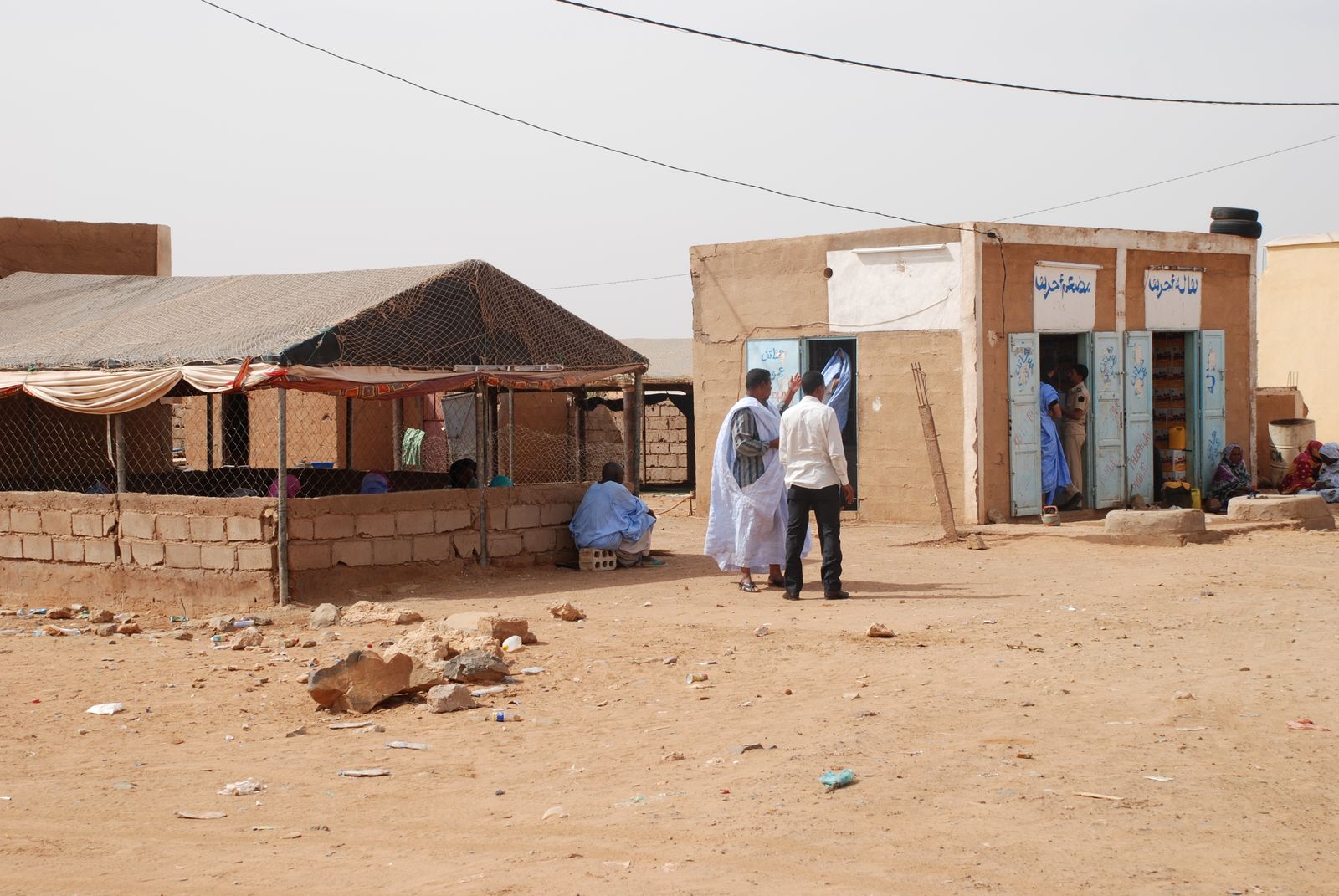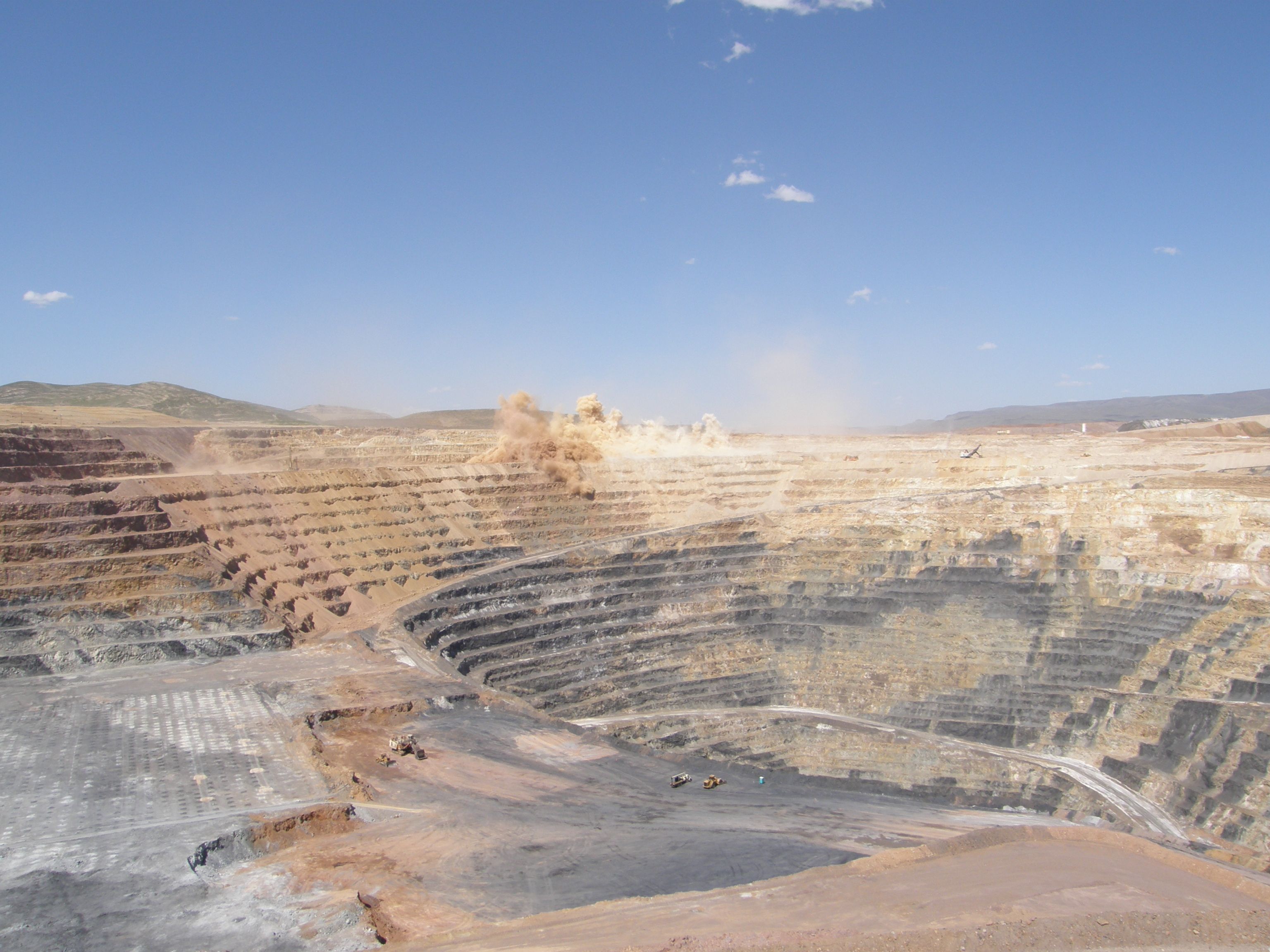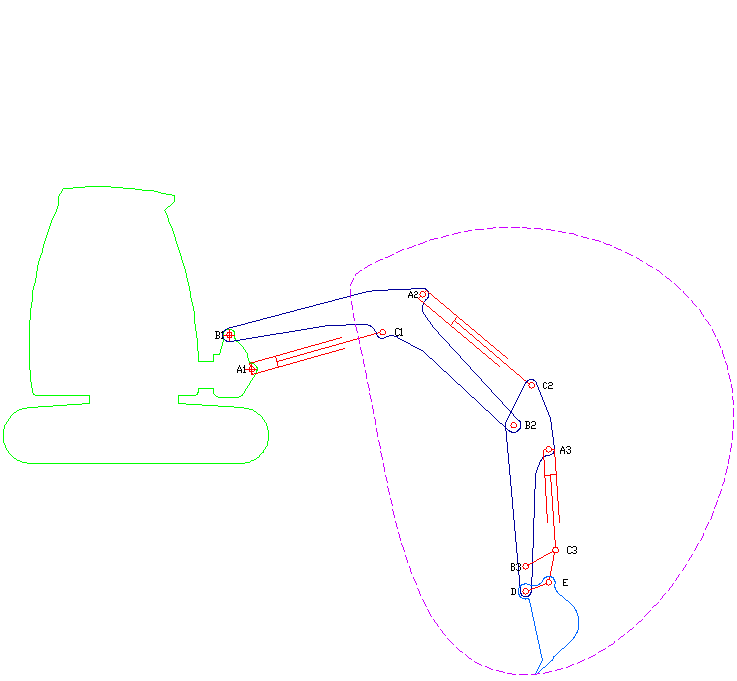|
Guelb Mohgrein Mine
Guelb Moghrein Mine is operated by Mauritanian Copper Mines S.A which is a subsidiary of First Quantum Minerals Ltd in Canada. Guelb Moghrein is located 4km to the west of Akjoujt town in the Inchiri region of Mauritania. Commercial production began in October 2006 and the current estimated mine life is 7 years. Mining is carried out in a single open pit using hydraulic excavators and mechanical drive haul trucks, approximately 1,800,000 tons of ore are mined every month to produce approximately 15,000 tons of copper concentrate per month at a grade of 23% copper with credits received for gold Gold is a chemical element with the symbol Au (from la, aurum) and atomic number 79. This makes it one of the higher atomic number elements that occur naturally. It is a bright, slightly orange-yellow, dense, soft, malleable, and ductile ... in the concentrate. In 2015 the Guelb Mine produced 45,001 tons of copper and 64,007 ounces of gold. The mine has been forced to temporaril ... [...More Info...] [...Related Items...] OR: [Wikipedia] [Google] [Baidu] |
Akjoujt
Akjoujt (Arabic: أكجوجت) is a small city in western Mauritania. It is the capital of Inchiri region. "Akjoujt" (ɑk'ʤuʤt) means 'wells'. The city's main industry is gold and copper mining. History Archeologists have discovered that as early as 1000 BC, copper smelting and mining was occurring in Akjoujt. According to archeologist Nicole N. Lambert, metallurgical traces and discovery sites proves relation between Mauritanian metallurgy and the introduction of Berbers into the western Sahara and the Sahel. In 1992 the city's old copper mine was repurposed into a gold mine. The company, Mines d'Or d'Akjoujt (MORAK), which was government-subsidized, was using many volatile and dangerous chemicals in the mines, and livestock and other animals in the area began to die. The runoff from the mine was stored in a plastic-lined retention pond and was very close to the city's water supply. Despite warnings that the rainfall in the area could cause the toxic material to spread, the ... [...More Info...] [...Related Items...] OR: [Wikipedia] [Google] [Baidu] |
Inchiri
Inchiri ( ar, ولاية إينشيري) is a region in western Mauritania. Its capital and only city is Akjoujt. It borders the regions of Adrar to the east, Trarza to the south, and Dakhlet Nouadhibou to the north and west, along with a short Atlantic Ocean coastline. The region is known for its rich copper deposits, and therefore is heavily mined. According to the World Health Organization, there is a malaria risk during the rainy season, which lasts from July to October. Former president Mohamed Ould Abdel Aziz was born and raised in Akjoujt. Demographics As of 2016, the population of the region was 20,386, compared to 19,639 in 2013 and 15,609 in 2011. The 2016 population included 10,812 males and 9,575 females. Economy, health and education As of 2008, the economic activity rate was 59.8% and the dependency ratio was 0.69. As of 2014, 26.1% of people worked for the government, 18.5% worked for private businesses, and 22.8% were self-employed. As of 2015, 97.2% of children ... [...More Info...] [...Related Items...] OR: [Wikipedia] [Google] [Baidu] |
Mauritania
Mauritania (; ar, موريتانيا, ', french: Mauritanie; Berber languages, Berber: ''Agawej'' or ''Cengit''; Pulaar language, Pulaar: ''Moritani''; Wolof language, Wolof: ''Gànnaar''; Soninke language, Soninke:), officially the Islamic Republic of Mauritania ( ar, الجمهورية الإسلامية الموريتانية), is a sovereign country in West Africa. It is bordered by the Atlantic Ocean to the west, Western Sahara to Mauritania–Western Sahara border, the north and northwest, Algeria to Algeria–Mauritania border, the northeast, Mali to Mali–Mauritania border, the east and southeast, and Senegal to Mauritania–Senegal border, the southwest. Mauritania is the 11th-largest country in Africa and the 28th-largest in the world, and 90% of its territory is situated in the Sahara. Most of its population of 4.4 million lives in the temperate south of the country, with roughly one-third concentrated in the Capital city, capital and largest city, Nouakchott, loca ... [...More Info...] [...Related Items...] OR: [Wikipedia] [Google] [Baidu] |
Open Pit
Open-pit mining, also known as open-cast or open-cut mining and in larger contexts mega-mining, is a surface mining technique of extracting rock or minerals from the earth from an open-air pit, sometimes known as a borrow. This form of mining differs from extractive methods that require tunnelling into the earth, such as long wall mining. Open-pit mines are used when deposits of commercially useful ore or rocks are found near the surface. It is applied to ore or rocks found at the surface because the overburden is relatively thin or the material of interest is structurally unsuitable for tunnelling (as would be the case for cinder, sand, and gravel). In contrast, minerals that have been found underground but are difficult to retrieve due to hard rock, can be reached using a form of underground mining. To create an open-pit mine, the miners must determine the information of the ore that is underground. This is done through drilling of probe holes in the ground, then plotting e ... [...More Info...] [...Related Items...] OR: [Wikipedia] [Google] [Baidu] |
Hydraulic Excavator
Excavators are heavy construction equipment consisting of a boom, dipper (or stick), bucket and cab on a rotating platform known as the "house". The house sits atop an undercarriage with tracks or wheels. They are a natural progression from the steam shovels and often mistakenly called power shovels. All movement and functions of a hydraulic excavator are accomplished through the use of hydraulic fluid, with hydraulic cylinders and hydraulic motors. Due to the linear actuation of hydraulic cylinders, their mode of operation is fundamentally different from cable-operated excavators which use winches and steel ropes to accomplish the movements. Terminology Excavators are also called diggers, JCBs (a proprietary name, in an example of a generic trademark), mechanical shovels, or 360-degree excavators (sometimes abbreviated simply to "360"). Tracked excavators are sometimes called "trackhoes" by analogy to the backhoe. In the UK and Ireland, wheeled excavators are sometimes ... [...More Info...] [...Related Items...] OR: [Wikipedia] [Google] [Baidu] |
Copper
Copper is a chemical element with the symbol Cu (from la, cuprum) and atomic number 29. It is a soft, malleable, and ductile metal with very high thermal and electrical conductivity. A freshly exposed surface of pure copper has a pinkish-orange color. Copper is used as a conductor of heat and electricity, as a building material, and as a constituent of various metal alloys, such as sterling silver used in jewelry, cupronickel used to make marine hardware and coins, and constantan used in strain gauges and thermocouples for temperature measurement. Copper is one of the few metals that can occur in nature in a directly usable metallic form (native metals). This led to very early human use in several regions, from circa 8000 BC. Thousands of years later, it was the first metal to be smelted from sulfide ores, circa 5000 BC; the first metal to be cast into a shape in a mold, c. 4000 BC; and the first metal to be purposely alloyed with another metal, tin, to create br ... [...More Info...] [...Related Items...] OR: [Wikipedia] [Google] [Baidu] |
Gold
Gold is a chemical element with the symbol Au (from la, aurum) and atomic number 79. This makes it one of the higher atomic number elements that occur naturally. It is a bright, slightly orange-yellow, dense, soft, malleable, and ductile metal in a pure form. Chemically, gold is a transition metal and a group 11 element. It is one of the least reactive chemical elements and is solid under standard conditions. Gold often occurs in free elemental (native state), as nuggets or grains, in rocks, veins, and alluvial deposits. It occurs in a solid solution series with the native element silver (as electrum), naturally alloyed with other metals like copper and palladium, and mineral inclusions such as within pyrite. Less commonly, it occurs in minerals as gold compounds, often with tellurium ( gold tellurides). Gold is resistant to most acids, though it does dissolve in aqua regia (a mixture of nitric acid and hydrochloric acid), forming a soluble tetrachloroau ... [...More Info...] [...Related Items...] OR: [Wikipedia] [Google] [Baidu] |
2016 Establishments In Mauritania
Sixteen or 16 may refer to: *16 (number), the natural number following 15 and preceding 17 *one of the years 16 BC, AD 16, 1916, 2016 Films * ''Pathinaaru'' or ''Sixteen'', a 2010 Tamil film * ''Sixteen'' (1943 film), a 1943 Argentine film directed by Carlos Hugo Christensen * ''Sixteen'' (2013 Indian film), a 2013 Hindi film * ''Sixteen'' (2013 British film), a 2013 British film by director Rob Brown Music * The Sixteen, an English choir *16 (band), a sludge metal band *Sixteen (Polish band), a Polish band Albums * ''16'' (Robin album), a 2014 album by Robin * 16 (Madhouse album), a 1987 album by Madhouse * ''Sixteen'' (album), a 1983 album by Stacy Lattisaw *''Sixteen'' , a 2005 album by Shook Ones * ''16'', a 2020 album by Wejdene Songs * "16" (Sneaky Sound System song), 2009 * "Sixteen" (Thomas Rhett song), 2017 * "Sixteen" (Ellie Goulding song), 2019 *"16", by Craig David from '' Following My Intuition'', 2016 *"16", by Green Day from ''39/Smooth'', 1990 *"16", by Hi ... [...More Info...] [...Related Items...] OR: [Wikipedia] [Google] [Baidu] |
Copper Mines In Mauritania
Copper is a chemical element with the symbol Cu (from la, cuprum) and atomic number 29. It is a soft, malleable, and ductile metal with very high thermal and electrical conductivity. A freshly exposed surface of pure copper has a pinkish-orange color. Copper is used as a conductor of heat and electricity, as a building material, and as a constituent of various metal alloys, such as sterling silver used in jewelry, cupronickel used to make marine hardware and coins, and constantan used in strain gauges and thermocouples for temperature measurement. Copper is one of the few metals that can occur in nature in a directly usable metallic form (native metals). This led to very early human use in several regions, from circa 8000 BC. Thousands of years later, it was the first metal to be smelted from sulfide ores, circa 5000 BC; the first metal to be cast into a shape in a mold, c. 4000 BC; and the first metal to be purposely alloyed with another metal, tin, to create bronze, c. ... [...More Info...] [...Related Items...] OR: [Wikipedia] [Google] [Baidu] |






